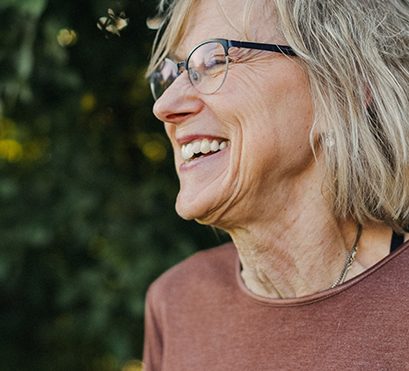The Novo Nordisk Foundation has awarded a grant of nearly DKK 15 million to Associate Professor Sune Darkner for upgrading a key model for calculating how the climate affects agriculture and vice versa. The grant is one of four the Foundation recently awarded for supporting data science research infrastructure.
The world is changing, and up-to-date models are needed to calculate how climate change will affect agriculture, how growing various crops will affect the climate and how different types of soil can each store different amounts of carbon to avoid contributing to global warming.
One key model for calculating interactions between soil, vegetation and climate in the Northern Hemisphere is DAISY, which is now being upgraded thanks to a major grant from the Novo Nordisk Foundation’s Data Science Research Infrastructure Programme. The purpose of the Programme is to support research infrastructure that is critical for data-driven research in Denmark.
Based on the grant, Sune Darkner, Associate Professor, Department of Computer Science, University of Copenhagen will overhaul DAISY in collaboration with the University’s Department of Plant and Environmental Sciences so that the model will be even more useful in the future and can tackle the complex calculations the world requires now and in the future.
“DAISY is already the most advanced model for calculating the relationships between soil, vegetation and climate, but the model needs to be expanded to be able to include more publicly available data and to make the user interface easier to use. This will give more people the opportunity to use the model for calculation: for example, in the public sector, for research purposes or by various stakeholder organisations, including within agriculture,” explains Sune Darkner.
Calculates very precisely
In its current form, DAISY, developed by the Department of Plant and Environmental Science at the University of Copenhagen, can calculate the interactions between soil and vegetation with extreme precision.
These interactions can include how a specific crop affects the soil’s ability to retain nitrate, which is essential for regulating the application of fertiliser. Other interactions include how a changing climate affects the storage of carbon in crops and the soil.
Although DAISY performs well, the grant will address two shortcomings.
- DAISY is extremely complex to use, making it quite inaccessible to non-experts.
- DAISY needs to be updated so that it can access relevant public data sources, including data for weather, topography, soil types and land use.
“DAISY must be accessible to many more people who do not necessarily have specialist knowledge of how it works. And then the data sources must also be relevant to all the questions people want to answer,” says Sune Darkner.
DAISY will tackle future climate challenges
The aim of the project is to make the DAISY user experience much easier. One way is by developing comprehensive teaching material on how to use the model.
DAISY will also acquire a much more accessible user interface so that more people can understand how it works. This will make DAISY accessible not only to computer scientists and soil physicists but also to public authorities and people from stakeholder organisations.
In addition, DAISY will be linked to publicly available data sources from, for example, the Danish Meteorological Institute and the Danish Agency for Data Supply and Infrastructure. DAISY is also planned to be equipped with artificial intelligence, so that it can both retrieve data when requested and continually improve by learning from the data.
Following the update, DAISY will be able to provide answers to some of the major questions asked by politicians, industry, nongovernmental organisations and the general public.
“The climate challenges are approaching much more rapidly than we had initially expected. How will these affect food production and the emission of greenhouse gases in Europe? How should agricultural land be used most optimally in the future? What can farmers do to reduce their carbon footprint? Many experiments can be carried out in agricultural fields to answer these questions, but this would take a century. With DAISY, we can simulate our way out of it and get the answers today,” explains Sune Darkner.
DKK 55 million awarded
The grant to Sune Darkner is one of four recently awarded by the Foundation under its Data Science Research Infrastructure Programme.
The following are the grant recipients.
- Cai Grau, Professor, Department of Clinical Medicine, Aarhus University: DKK 15 million
Project title: DESIRE: Data Science Research Infrastructure in Radiotherapy - Kristian Sommer Thygesen, Professor, Department of Physics, Technical University of Denmark: DKK 11 million
Project title: A High-performance Computing Infrastructure for Data-driven Research on Sustainable Energy Materials - Poul Jørgen Jennum, Professor, Department of Clinical Neurophysiology, Rigshospitalet, Copenhagen: DKK 14.7 million
Project title: Biomedical Data Infrastructure (BDI) for Health Research: National Neurophysiologic Database (NND) - Sune Darkner, Associate Professor, Department of Computer Science, University of Copenhagen: DKK 14.8 million
Project title: AgroEco-HPM: A High-performance Data-driven Agroecosystem Modelling Platform for Developing Agricultural Systems with Minimum Environmental Impact
The Foundation’s data science grants
From 2023, grants for research within data infrastructure are being administered under the Foundation’s Research Infrastructure Programme.
The Foundation awards grants for other research within data science through two stand-alone programmes: the Data Science Collaborative Research Programme and the Data Science Investigator Programme, which is part of the Novo Nordisk Foundation Research Leader Programme.









